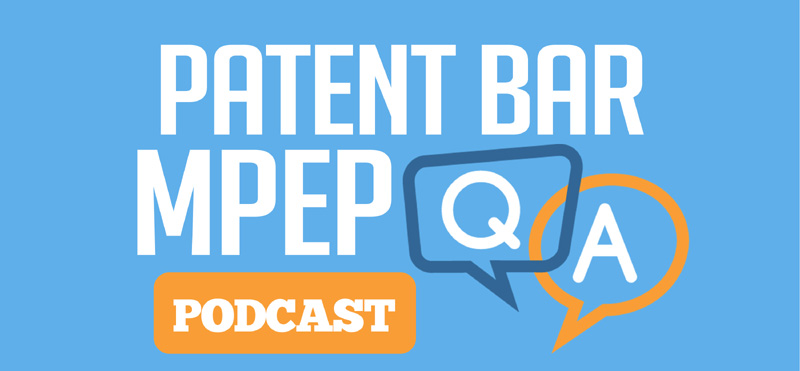
Podcast: Play in new window | Download
Subscribe: Apple Podcasts | RSS
Question:
Name one type of issue that may trigger a rejection.
Answer:
Rejections are usually made due to issues with one of the following:
- unpatentable subject matter or lack of utility (35 U.S.C. 101)
- issues with novelty (35 U.S.C. 102)
- issues with obviousness (35 U.S.C. 103)
- lack of subject matter
- issues with the written description, enablement and best mode (35 U.S.C. 112)
Chapter Details:
The answer to this question can be found in chapter 700 of the MPEP. This chapter covers Examination of Applications.
The answer is from the 9th Edition, Revision 07.2015. Depending on future changes to the MPEP, the question and answer may or may not be applicable in later Editions or revisions.
Section Summary:
This question and answer comes from section 706 of the MPEP. The following is a brief summary of section 706.
706 Rejection of Claims
This section describes some of the various reasons why an examiner may reject the claims of an application and how the applicant can overcome these rejections.
The requirements for patentability include patent eligible, useful, novel, nonobvious, enabled, and clearly described. These criteria are outlined in 35 U.S.C. 101, 102, 103, and 112 and will determine the basis of an examiner’s rejection of the claims at any time during the prosecution of the application.
35 U.S.C. 101 deals with what is patentable. If the disclosed subject matter is not a process, manufacture, machine or composition of matter made by man, and/or it has no utility, it will be rejected under 35 U.S.C. 101.
35 U.S.C. 102 discusses the conditions for patentability; novelty and the loss of the right to patent. The 102 laws (see Appendix I – Prior Art Rejections and Appendix II: 35 U.S.C. 102) state that the inventor listed on an application will be granted a patent unless he or she was not the first to invent the subject matter.
35 U.S.C. 103 (see Appendix I – Prior Art Rejections and Appendix III: 35 U.S.C. 103) relates to the obviousness of the subject matter. If the invention is found to be obvious in relation to the prior art, the applicant will not be granted a patent.
35 U.S.C. 112 (see Appendix V: 35 U.S.C. 112) relates to the description of the subject matter. If the patent application does not meet the standards outlined in 35 U.S.C. 112, it will be rejected.
This section includes a brief discussion on the uniform application of the patentability standard, defects in form or omission of a limitation, patentable subject matter disclosed but not claimed, and reconsideration of claims after reply by applicant.
